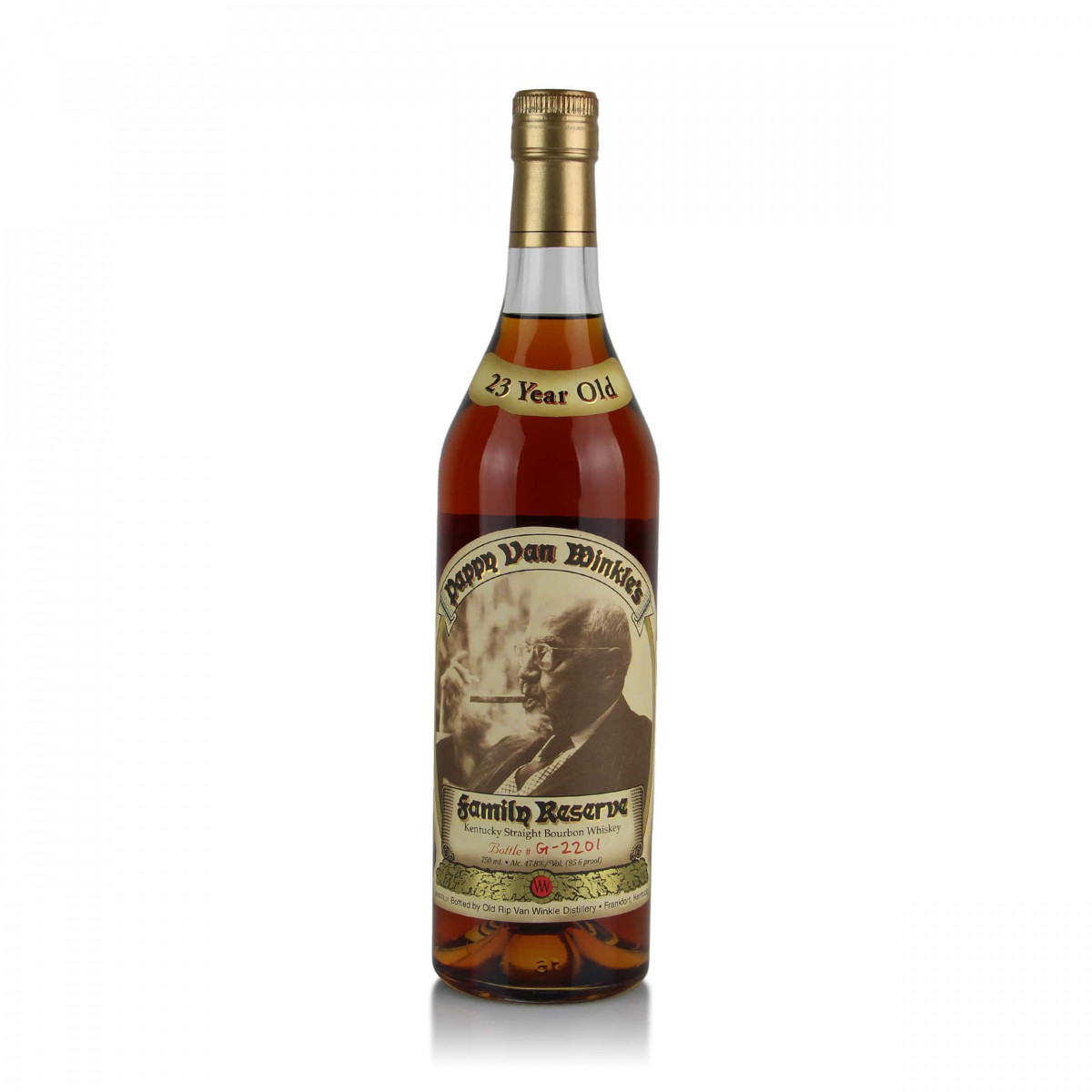Bourbon history and how to date your Pappy
The past decade has witnessed record levels of consumer interest in whisk(e)y. Through the efforts of producers worldwide, the category has slowly transformed into a luxury good with a young and renewed consumer base. Demand has fluctuated, with industries expanding and collapsing, but whisky has endured. As Scottish whisky has grown, so have Irish, American, and world whiskies. However, in the US, bourbon has truly experienced a boom like no other, with every major producer in the country spending billions of dollars on large-scale expansions. Bourbon sales grew a staggering 47% from 2017 to 2022 in the United States (Sara Havens, 2023). This article will explore some of the significant events in the category’s history and demystify some of the theorised sources of particular brands, such as the Pappy Van Winkle series.
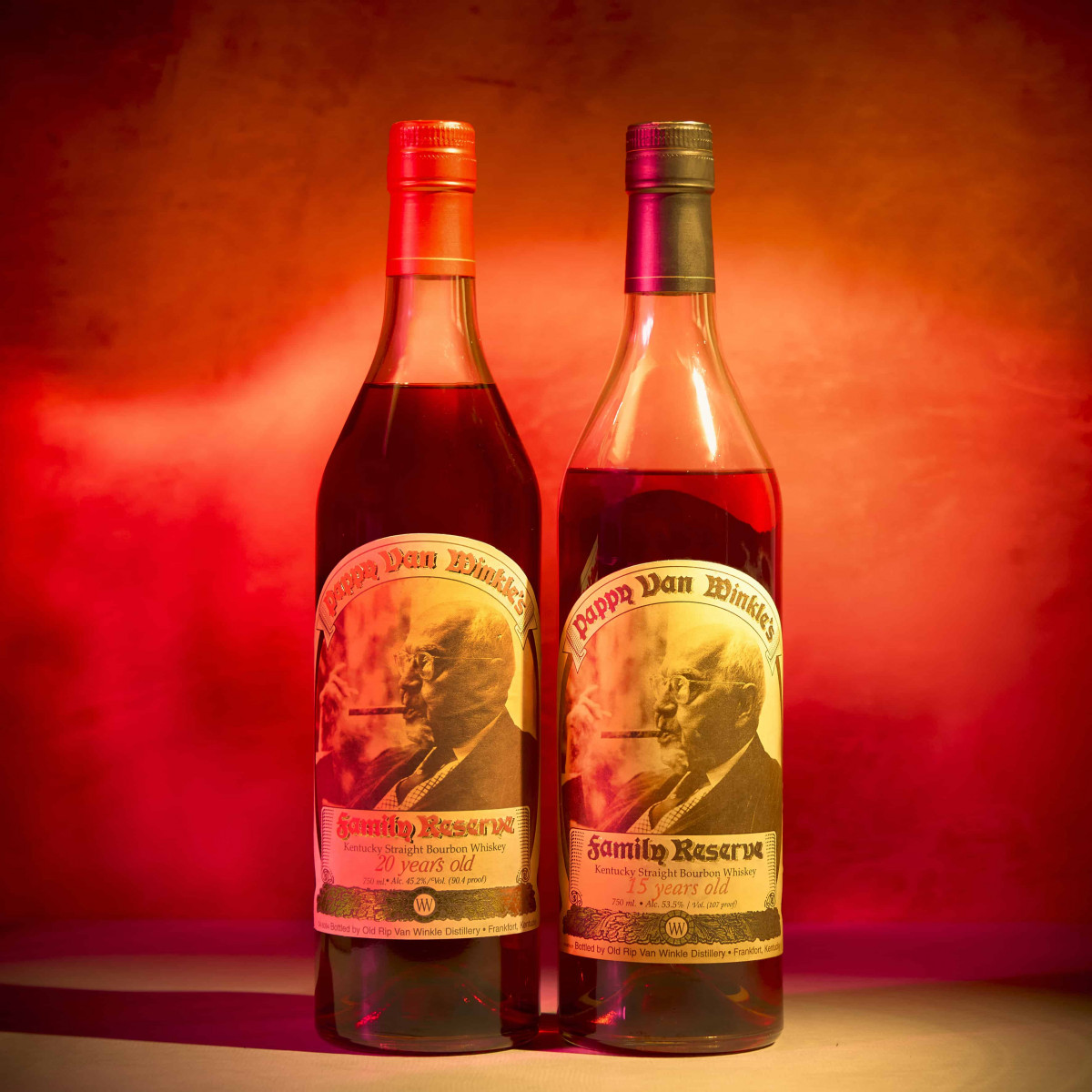
Pre-2007 Pappy 20 Year Old & 2007 Bottling Pappy 15 Year Old Featured in January’s Auction
Prohibition and the 20th century
For brevity, let's examine the prohibition and post-prohibition era to delineate modern bourbon producers. With the ratification of the 18th amendment in January 1920, the production, distribution, and transportation of alcoholic beverages in the United States became illegal.
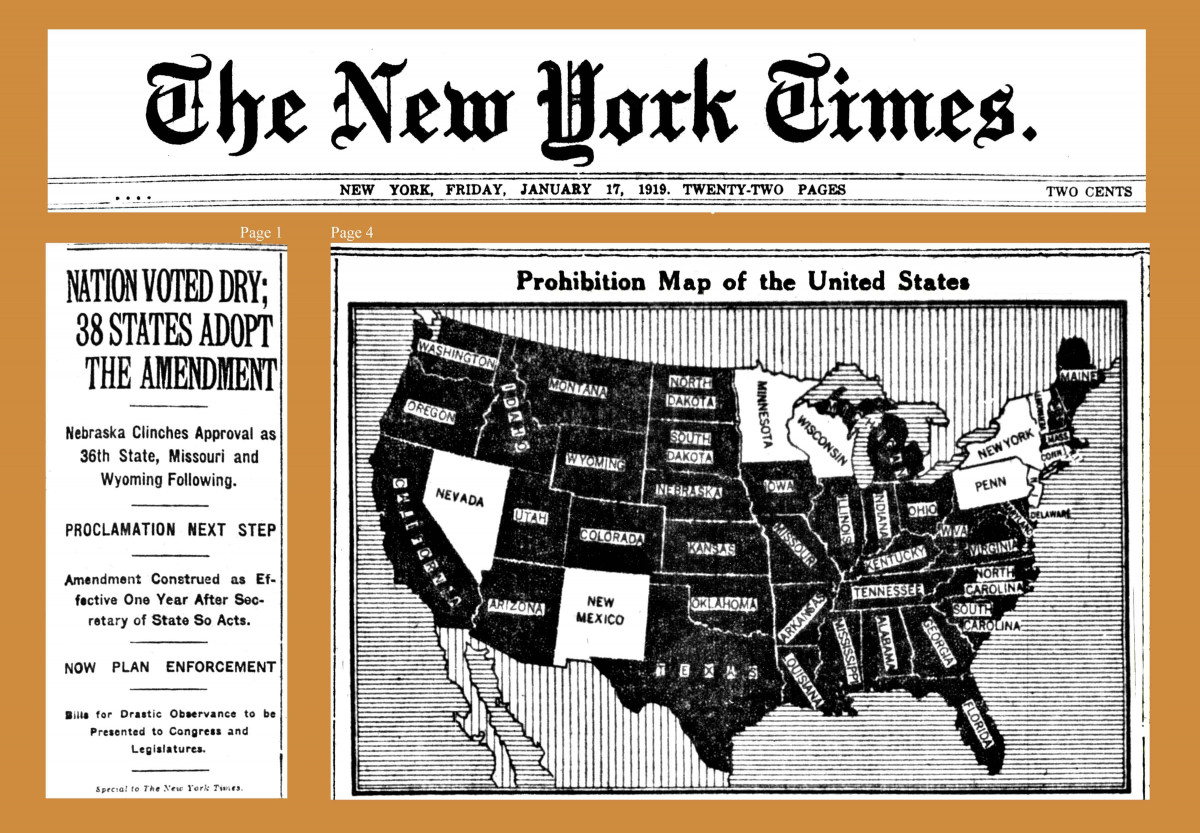
The New York Times newspaper (published January 17, 1919)
Around 2000 distilleries were in operation before 1919 (Blaker Riber, 2018), but only six companies were permitted to produce alcohol for "medicinal" purposes during prohibition. These companies were Glenmore, A. Ph. Stitzel, Brown-Forman, Frankfort Distilleries, Schenley, and American Medicinal Spirits. Before the 1920 amendment, bourbon production was dispersed throughout the US, with Pennsylvania and Maryland notably well-regarded for their bourbon and rye whiskies. However, the government-mandated shutdown during prohibition adversely affected smaller craft spirit producers, allowing only larger companies with diverse interests beyond spirits to rebound post-prohibition. It is not surprising, then, that when discussing bourbon producers of the 20th century, much of the focus centres around the six companies that were granted licences to distil during prohibition. These companies would later merge, acquire brands, and construct new distilleries throughout the 1900s.
The American Medicinal Spirits company was acquired by National Distillers in 1929, later being purchased by Beam Imports in 1987.
Glenmore Distillery, bought by Guinness in 1991, merged to become part of the company we now recognize as Diageo. Glenmore ceased distilling operations in 1993 but continued bottling Diageo products until 2009, when Sazerac (owners of Buffalo Trace) acquired the site.
Brown-Forman has maintained a dominant position in global spirits throughout history, owning brands such as Jack Daniel’s, Woodford Reserve, and Old Forester in the US, along with an extensive portfolio of international distilleries including Glendronach in Scotland, Diplomatico in Venezuela, and Herradura in Mexico.
Schenley, one of history’s major distillers, held the Stagg, Pepper, and Squibb distilleries at the end of prohibition, acquiring the Bernheim distillery and George A Dickel distillery in 1937. After various brands were sold off, the entire company was purchased in 1987 by United Distillers, which later merged with Guinness to form Diageo.
The remaining two companies, Frankfort Distillers and A. Ph. Stitzel, were intertwined, with Frankfort contracting Stitzel for stocks in the late 1920s. In 1933, they took over the Stitzel plant and built the Four Roses distillery in Shively, before Seagrams acquired the entirety of Frankfort Distillers in 1943. Seagrams played a dominant role in global spirits before declaring bankruptcy in 2000.
A. Ph. Stitzel ultimately prospered, merging with W.L. Weller and Sons in 1933 to create the legendary name Stitzel-Weller. They established their new distillery in 1935, managed by the Van Winkle family, producing some of the world’s most sought-after bourbon brands, including Old Fitzgerald, Cabin Still, W.L. Weller, and Belle of Bourbon. In 1972, the company was sold to Norton Simon Inc and renamed the Old Fitzgerald distillery, later purchased in 1984 by Distillers Corporation Limited. The site was then acquired in 1986 by Guinness, which merged with United Distillers to create the brand we now know as Diageo. Production ceased in 1992 as United Distillers moved to their newly built Bernheim distillery.
These six companies serve as the foundation for 20th-century bourbon production. However, as the industry faced challenges in the 1980s, much of the business underwent consolidation, as mentioned earlier.
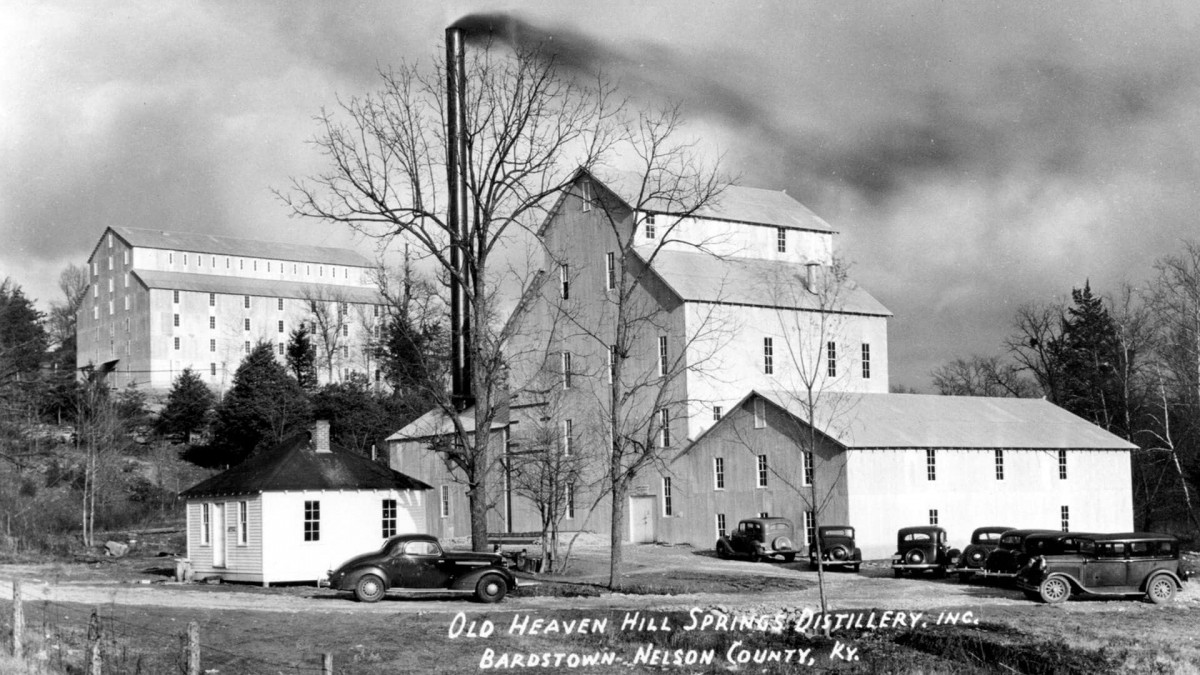 Old Heaven Hill Springs Distillery (Image credit Heaven Hill)
Old Heaven Hill Springs Distillery (Image credit Heaven Hill)
Another significant player is Heaven Hill, a company that recognized the post-prohibition era as an opportunity. In 1935, the Heaven Hill Springs Distillery was constructed. The company has, and continues to this day, provided a substantial amount of liquid for sourced brands or non-distilling producers (NDPs). NDPs are brands that lack their own distillery but market whiskey, either purchased mature or acquired as new-make spirit and aged in their own warehouses. While there is a parallel with Scottish independent bottlers, American NDPs typically refrain from using the name of the distillery they sourced from, instead focusing on marketing their own brand.
Regrettably, Heaven Hill Springs was destroyed in a fire in 1996. Shortly after, the firm acquired the Bernheim distillery from Diageo to ensure the continued production of spirits.
Japan and bourbon
As bourbon gained popularity in the post-prohibition period, it began to face challenges to its reputation towards the latter part of the 20th century. Schenley and many other brands had significantly increased production in the 1960s. However, when demand failed to rise as predicted, a substantial surplus of stock accumulated. By the 1970s, bourbon was grappling with a common whiskey reputation issue - the perception that the spirit was exclusively for old men in leather armchairs and wasn't appealing to younger generations. A similar identity crisis occurred for Scotch whisky, and throughout the late 70s and into the 1980s, Western consumers showed more interest in white spirits, sweet cocktails, and party drinks like Tequila, Vodka, and inexpensive white rums. This shift in consumer preferences left bourbon producers with warehouses full of stock that the US market simply wasn't buying.
However, through the collaborative efforts of Schenley and Brown-Forman, a partnership with Japanese whisky maker Suntory was established.
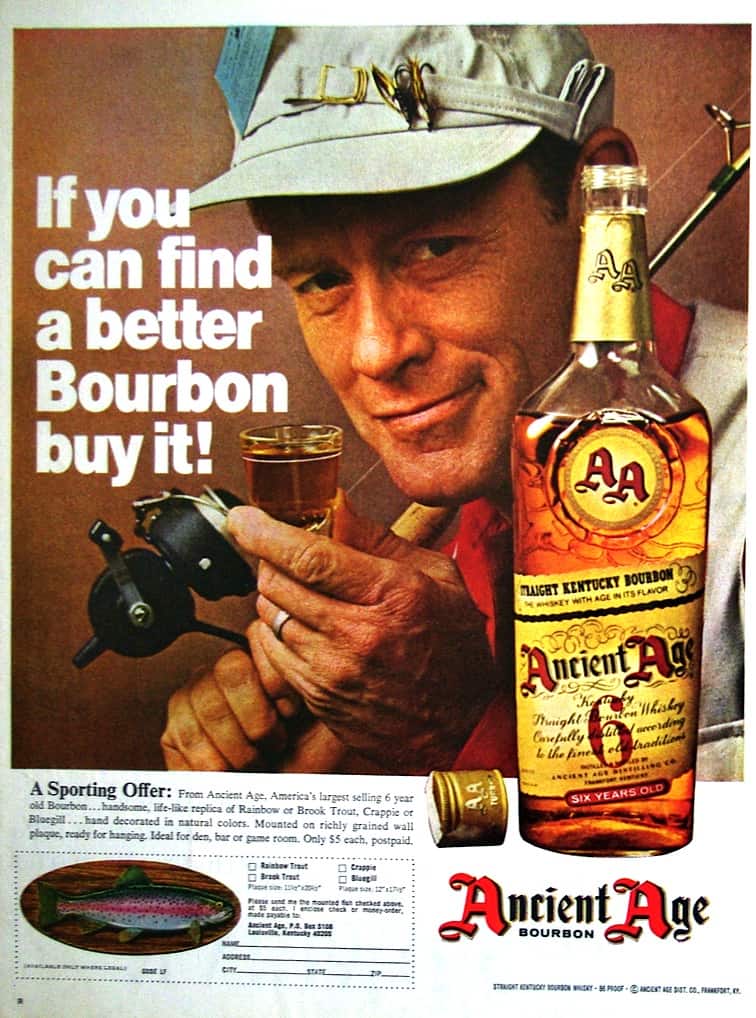
Ancient Age advertisement circa 1968 (image credit Alcohol Professor)
The Japanese encountered a somewhat similar issue with whiskey's image, as their "old man drink" was Scotch whisky. With domestic sales plummeting, the bourbon industry strategically marketed their whiskey as the hip, young person's drink in the Japanese export market. This tactic proved successful, capturing the interest of the Japanese, and as the country's economy experienced a boom period, so did the sales of bourbon. The I.W. Harper brand from Schenley, which was a common bottom-shelf bourbon in the United States with minimal sales, became a highly sought-after favourite among Japanese drinkers. Following the marketing move, I.W. Harper was removed from U.S. shelves to be exclusively exported to Japan.
The Japanese market had a distinct penchant for well-aged, premium offerings, especially those boasting high age statements. This inclination played a pivotal role in elevating the status of brands such as Pappy Van Winkle, Willett, Black Maple Hill, and the Very Old St Nick labels, establishing a reputation that persists to this day. Notably, the Old St Nick brand garnered significant acclaim, given its origin with Marci Palatella, who served as Julian Van Winkle’s agent in the Japanese market. Following the Van Winkles' model, she curated casks from various locations across the United States, releasing single barrels and remarkably aged expressions exclusively for the Japanese market. In 2018, Palatella took a bold step by inaugurating Preservation Distillery in Kentucky, focusing on the exclusive production of pot-distilled bourbon and rye whiskies.
The Van Winkles and the legend of Stitzel-Weller
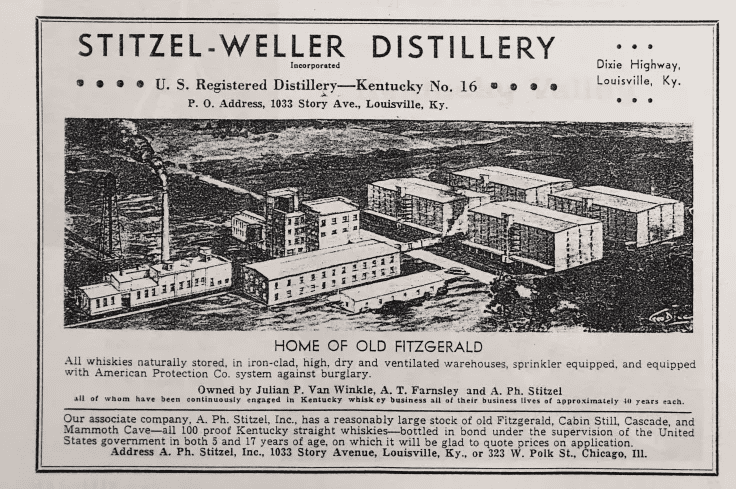 Stitzel-Weller distillery featured Spirits Magazine, May 1936, From Michael Veach’s Archive (image credit bourbon Veach)
Stitzel-Weller distillery featured Spirits Magazine, May 1936, From Michael Veach’s Archive (image credit bourbon Veach)
Julian Van Winkle III, the grandson of the original Pappy Van Winkle, took the reins of the Old Rip Van Winkle company in 1977. He capitalised on the growing popularity of bourbon in Japan, successfully selling stocks of Stitzel-Weller and sourced Heaven Hill whiskies. After Somerset Imports acquired Stitzel-Weller in 1972, Julian Van Winkle Jr. (son of Pappy) was permitted to maintain an office at the distillery and given the first choice of casks for his own brands. The Van Winkle family stands out in the bourbon industry as they initially started as distillers and later transitioned into non-distilling producers (NDPs). This is unusual, as brands typically bottle other people's spirits while waiting for their own to mature.
Upon Julian Van Winkle Jr.'s death in 1983, Somerset terminated the agreement. Julian Van Winkle III responded by purchasing the shuttered Hoffman distillery, also known as the Ezra Brooks or Commonwealth distillery, in Lawrenceburg. He relocated his bottling and ageing operations to this facility.
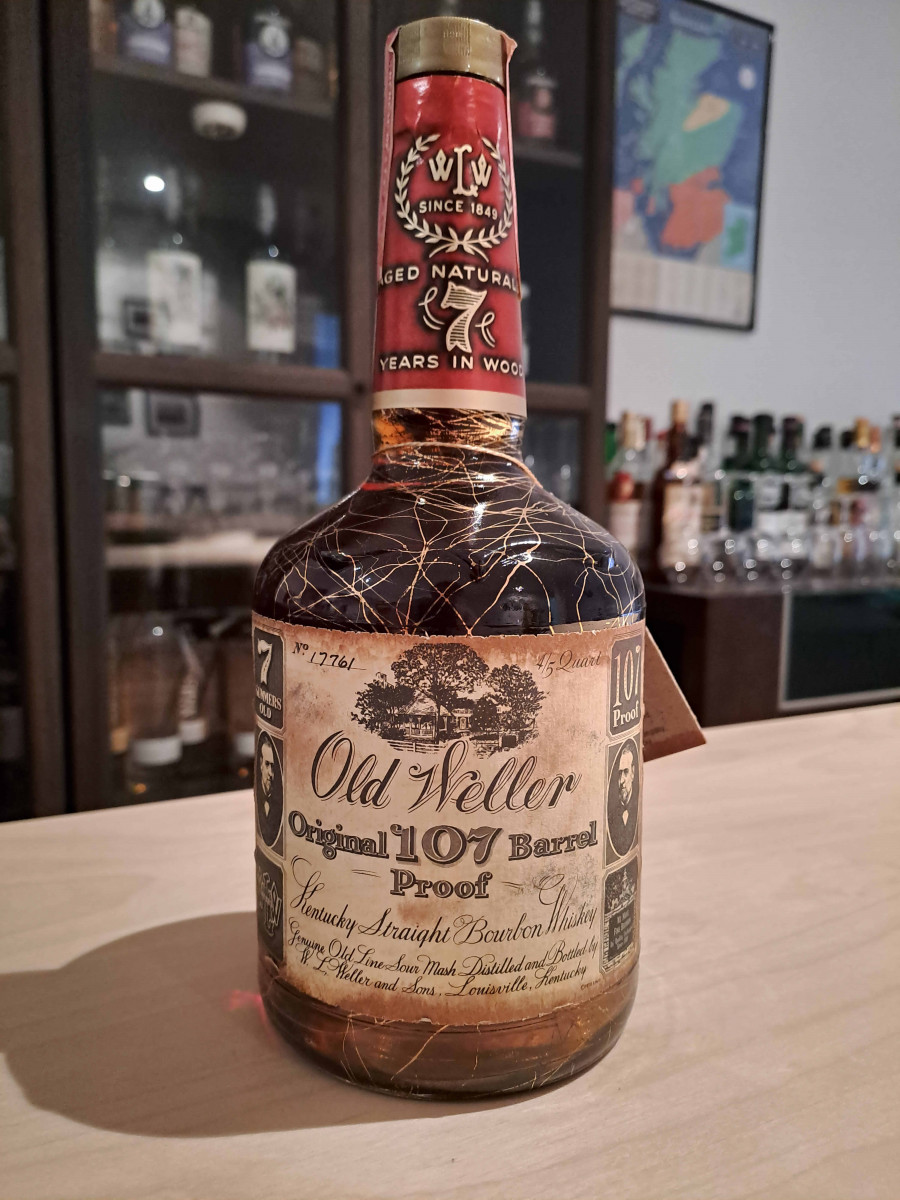 1976 bottling of 7 year old Old Weller 107 containing Stitzel-Weller whiskey (image credit Owain Phillips)
1976 bottling of 7 year old Old Weller 107 containing Stitzel-Weller whiskey (image credit Owain Phillips)
Just one year later, in collaboration with Gordon Hue, a Kentucky liquor store owner, Julian Van Winkle III launched the Van Winkle Family Reserve and Special Reserve brands. Despite the low demand for bourbon, Julian still had access to casks from Stitzel-Weller. Recognizing the opportunity, he began bottling very well-aged releases, some exceeding 20 years, specifically for the export market. These releases ultimately established the Van Winkle name and set the standard for their bourbon today.
Julian III successfully transformed his father's business, which initially sold young bourbon in gimmicky decanters, into a premium brand adored by Japanese buyers. Although no actual distillation took place at the Hoffman site, Julian used it as the hub for all Van Winkle operations until 2002.
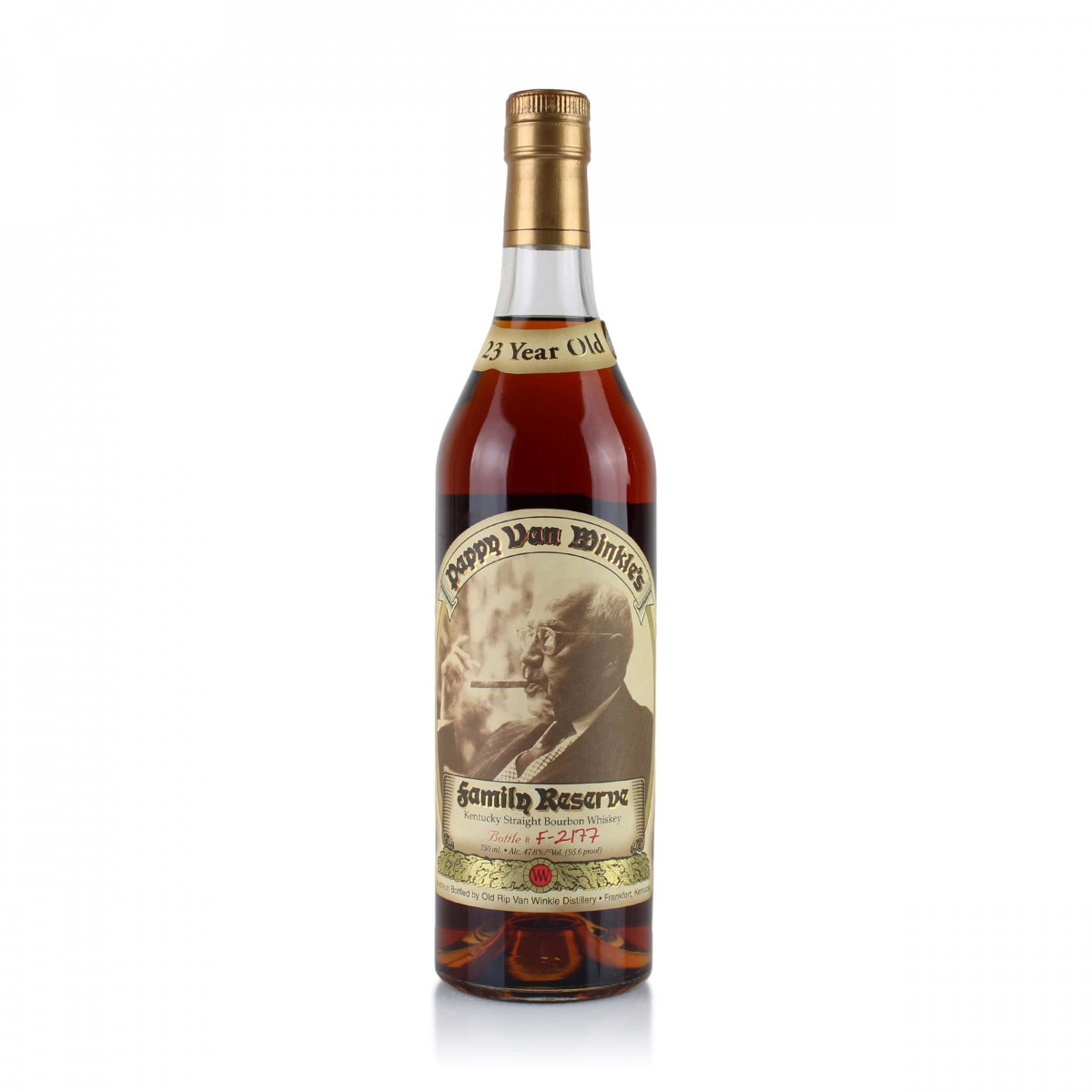
A 2014 bottling of the Pappy Van Winkle 23 year old containing spirit sourced from Stitzel-Weller
In 1992, United Distillers closed Stitzel-Weller. While Julian still had access to casks from Stitzel-Weller, he actively purchased stocks from other distilleries. It's reported that he held stocks from Heaven Hill, Medley, Old Boone, and the George T Stagg distillery, in addition to his Stitzel-Weller casks. The early expressions of the Van Winkle Family Reserve label were purportedly crafted using a rye-based recipe (still bourbon but using rye in the mashbill over wheat) from the Old Boone distillery. Old Boone had closed in the mid-1970s and was often used as a sourced distillery for Wild Turkey. Julian acquired stocks from Wild Turkey after they had transitioned to their own distillate post-1981 (Rarebird 101, 2018). Notably, the 1999 Pappy 23-year-old first release, a gold-waxed edition bottled at Hoffman, was confirmed to contain this rye-based recipe. Thus, not all Pappy/Van Winkle products contain the lighter wheated bourbons we associate with the brand and the Stitzel-Weller distillery.
Furthermore, the Van Winkle line included a 13-year-old expression of rye whiskey under the Family Reserve name. Since Stitzel-Weller never produced rye whiskey, the source of this spirit was reported to be from the Medley distillery in Owensboro. Medley was a highly successful distillery in the 20th century but was sold in 1988 to their neighbour Glenmore, who, in turn, was purchased by United Distillers in 1992. Stocks were retained by the Medley family after Glenmore was sold, but Julian reportedly acquired a substantial amount of rye whiskey from as far back as 1985. He aged this rye in cask until 2004 when it was tanked to halt any further interaction with wood. Notably, this tanked stock also had rye whiskey distilled in the 1980s at the Old Bernheim distillery blended through it. The rye from Old Bernheim was often bottled under the Cream Of Kentucky brand, but during the 1980s, well-aged Kentucky ryes were being bottled under now-legendary names like Red Hook rye and by Willett.
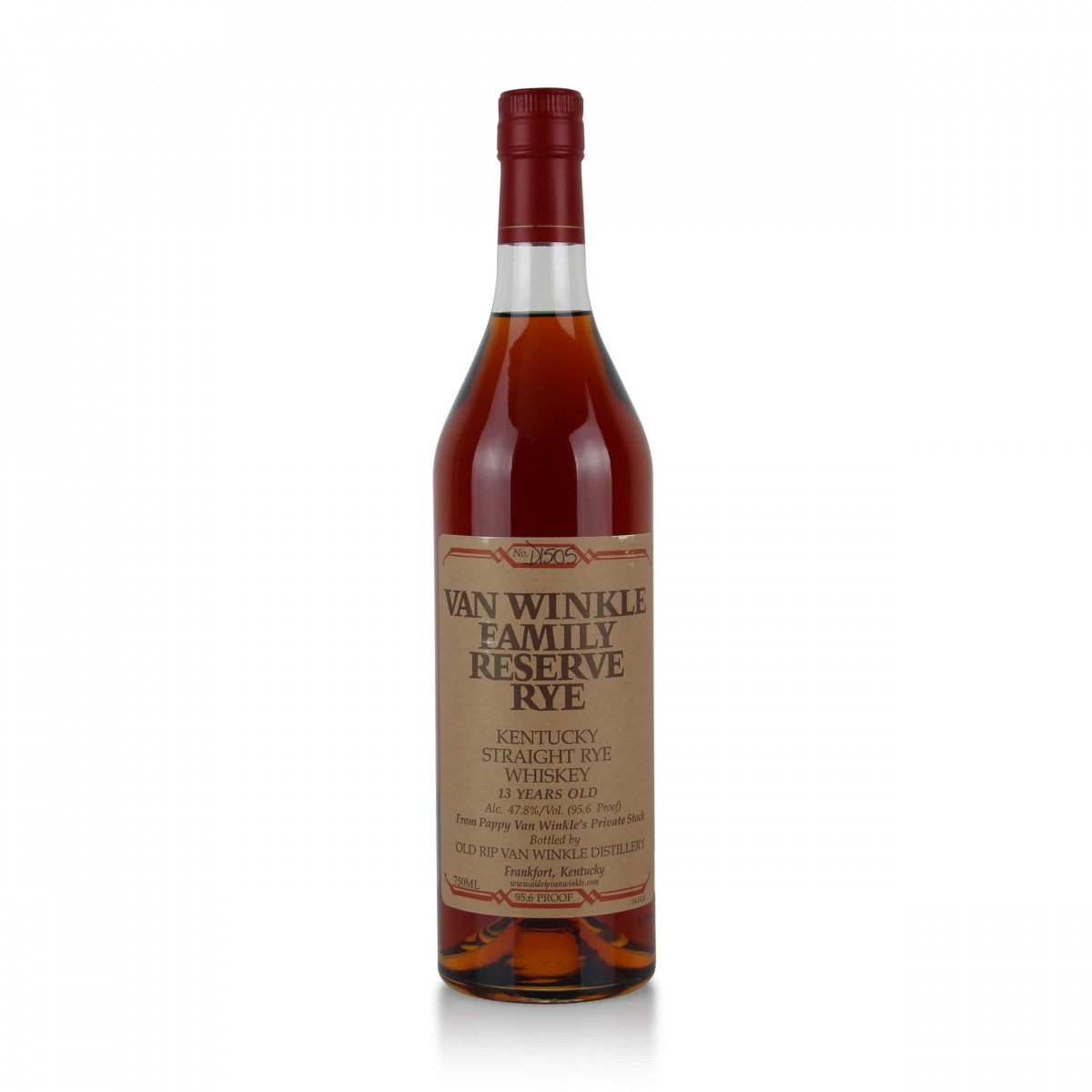
2013 bottling of the Van Winkle Rye containing the tanked rye spirit from Medley blended with Cream of Kentucky
With a finite supply of Stitzel-Weller casks in existence, it was inevitable that Julian's stocks would eventually run out. Subsequently, he reached an agreement with the Buffalo Trace distillery to contract distil the Van Winkle bourbons. Buffalo Trace allowed Julian to transfer the remaining stocks he held at Hoffman to their warehouses and initiated the production of a wheated bourbon according to Pappy's original recipe. The Van Winkle brand continued to utilise remaining Stitzel-Weller stocks until they were depleted. Afterward, the liquid in the bottle would be mature spirit crafted by Buffalo Trace.
Determining the likely distillery of your bottle of Pappy isn't an exact science due to the Van Winkles' sourcing from various distilleries across the country. However, some educated guesses can be made. Considering that Stitzel-Weller closed in 1992, certain conclusions can be drawn. We encourage feedback and updates on our dating guide as there may be releases not easily available online. If you have corrections/thoughts please send us an email and we’d love to hear from you!
Dating guide
Dating a Van Winkle/Pappy release involves paying attention to various details. While many early releases featured vintages along with age statements, for more common releases like the 10/12/15 year olds, one needs to examine the glass. Post-2007, bottles showcase black printed laser codes from the bottling line. These codes are typically found towards the bottom of the bottle, just below the label. Occasionally, they might be obscured by importer stickers, so it's advisable to check under the sticker if you can't locate the string of numbers.
*Please note that this dating information will be updated as more details become available. Research and guide information date to the most recent available data.
Laser codes are in two different formats, a pre-2012 and a post-2012 style.
Pre-2012 example: K1051009:27
K = bottling line designation
105 = 105th day of the year
10 = the year
09:27 = time of day
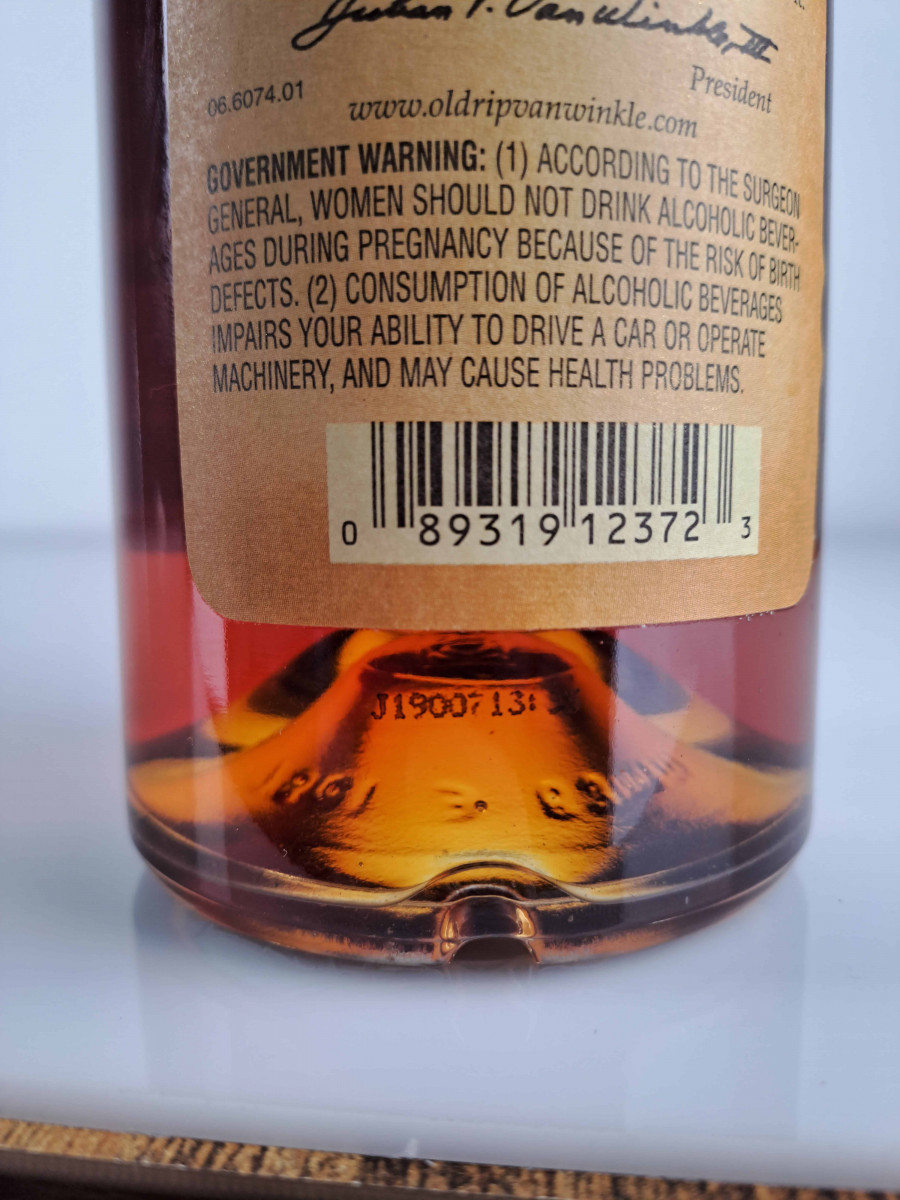 Pre-2012 dating format example
Pre-2012 dating format example
Post-2012 example: B1721012:24K
B = Buffalo Trace
17 = the year
210 = 210th day of the year
12:24 = time of day
K = bottling line designation
*A quick way to establish if this is pre or post-2012 is the presence of two letters in the code. If there is a letter at the start AND end, it is post-2012 but if there is a letter ONLY at the start then it is pre-2012.
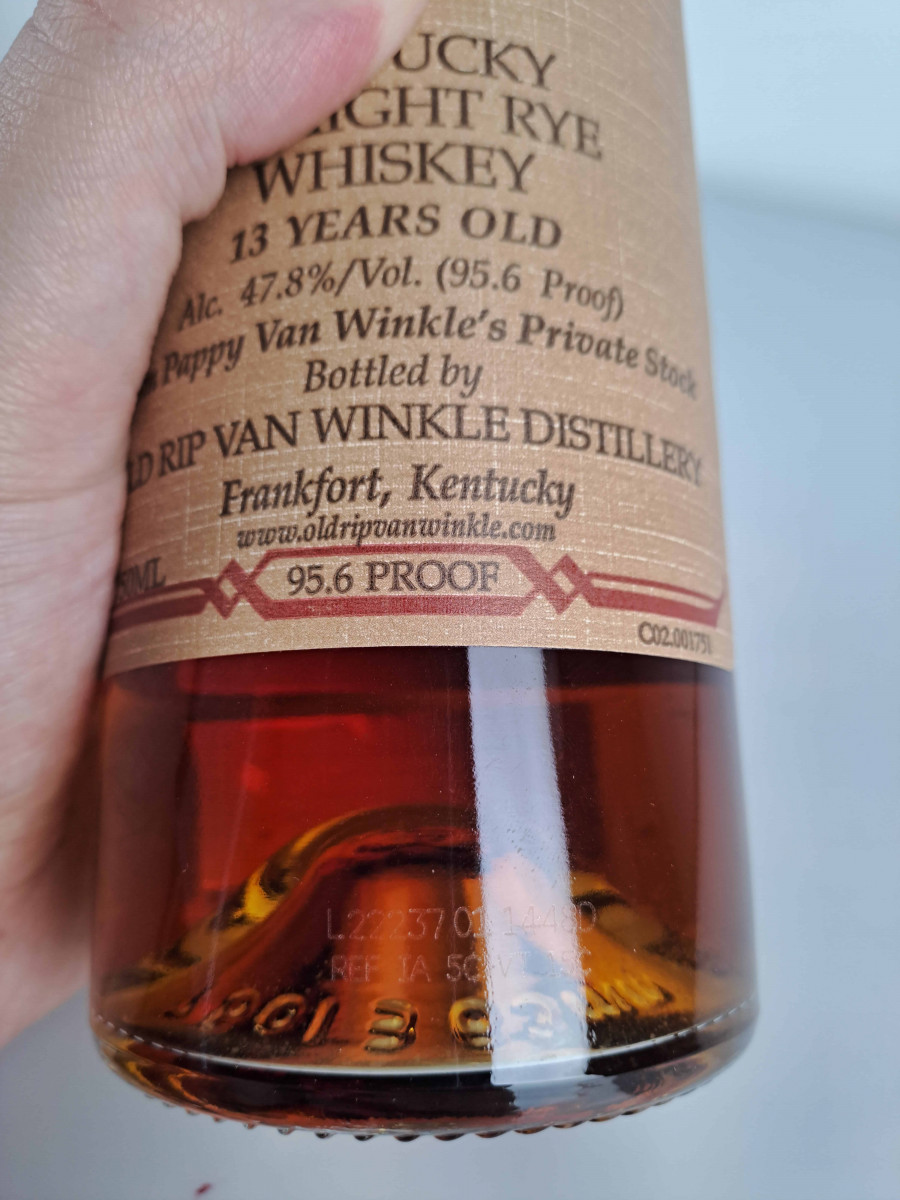
Post-2012 laser code example
Old Rip Van Winkle 10 year old
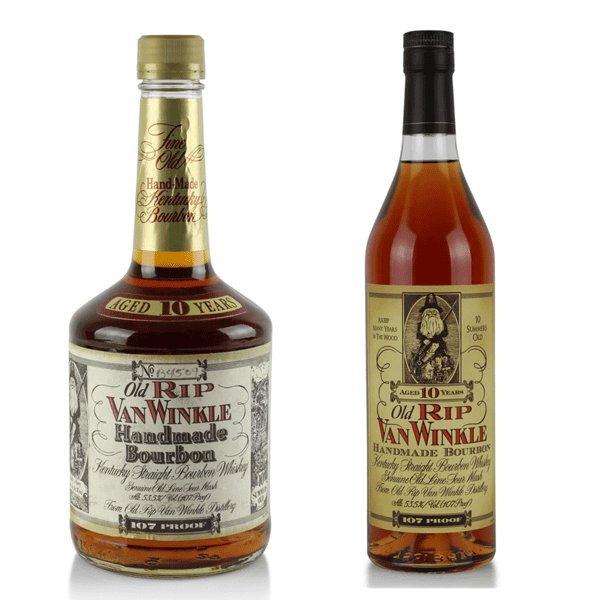
1983 - First introduced and available in both a 107 and 90 proof strength bottling. *Note this specific date is contested but it was certainly 1989 or prior. Some private stock labels for retail clients were bottled in this era as well. All Van Winkle products are expected to be Stitzel-Weller; the Old Boone stock was likely used for the Pappy label.
2002 - Final year Stitzel-Weller bourbon could be used. All following bottles will be Buffalo Trace wheated spirit. Note that until 2002 BT did not have the correct Stitzel-Weller wheated recipe, so 10 year old expressions until 2010 are from the original Buffalo Trace wheated recipe. Hoffman distillery in Lawrenceburg abandoned for Buffalo Trace in Frankfort. Bottles with Lawrenceburg as the company address are pre-2002.
2004 - Bottled in cognac style glass like the Pappy range but still also using squat/dumpy bottles. Cognac shaped bottles used during this time are theorised to be for export markets like the UK but no confirmation can be made.
2007 - Laser codes introduced. See laser code dating guide.
2011 - Last year we can find evidence of the 90 proof expression being bottled
2012 - Final year the squat bottle was used. First year that Pappy era wheated bourbon recipe could be bottled.
Old Rip Van Winkle 12 Year Old (Special Reserve Lot B)
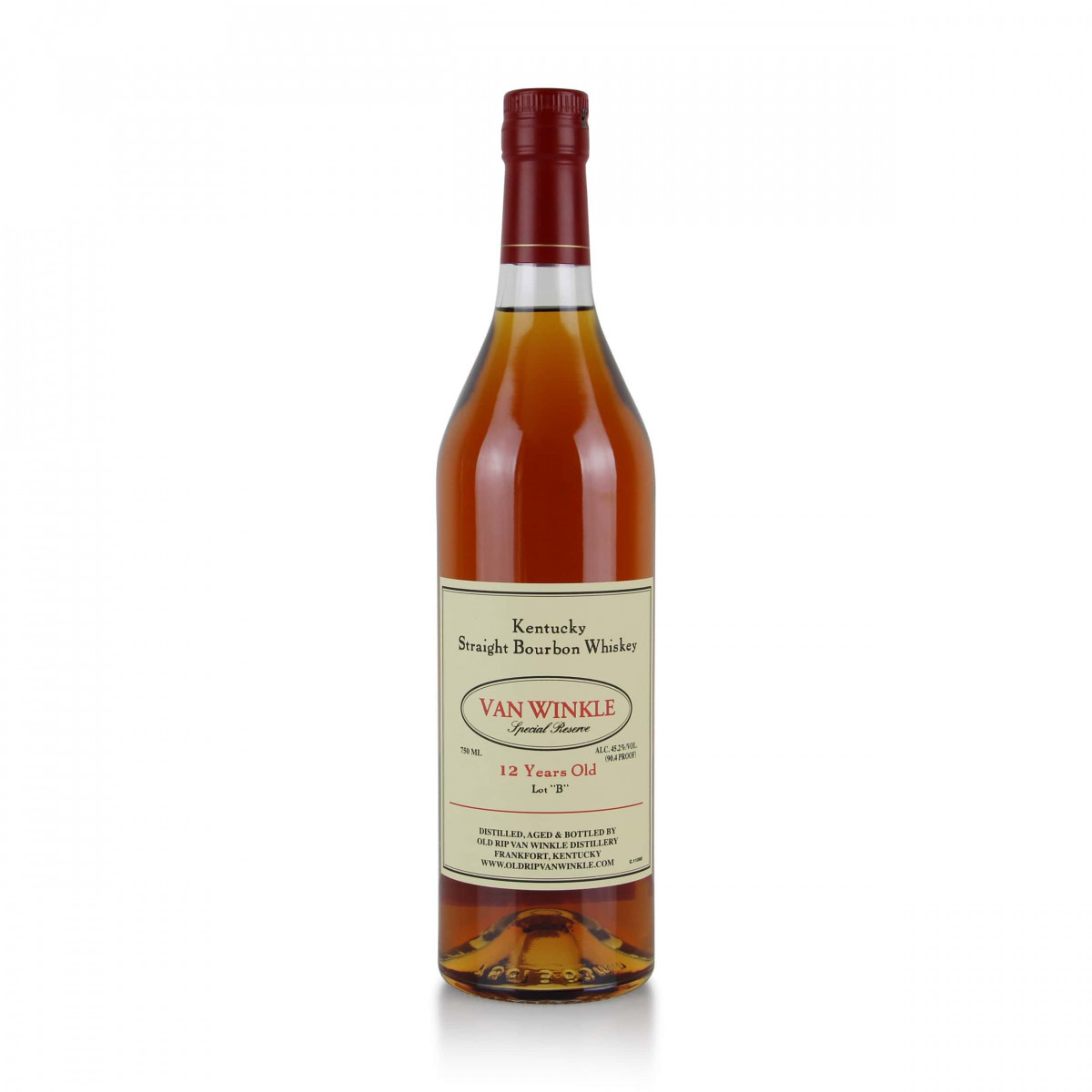
Late 1980’s - No perfect date but the 12 year old first appeared as the Family Reserve sometime in the 1980’s.
1991 - Earliest date we can find the Special Reserve Lot B being bottled. It carried the signature 90.4 proof and contained Stitzel-Weller spirit. Reportedly a Lot A one off bottling came in 1991 as well but no evidence of the bottle can be found.
Late 1990’s - Again no perfect date here but around 1997-1998 the label is revamped from a white rectangle to now feature the Van Winkle logo in an oval.
2002 - Hoffman distillery in Lawrenceburg abandoned for Buffalo Trace in Frankfort. Bottles with Lawrenceburg as the company address are pre-2002.
2004 - Last year of potential SW. Unfortunately no way to date the 2002-2007 bottles as they are pre laser code, so any bottles in this area could be either SW or Buffalo Trace wheated bourbon pre pappy recipe.
2007 - Laser codes introduced. See laser code dating guide.
2014 - First year that Pappy era wheated bourbon recipe could be bottled
Old Rip Van Winkle Old Time 12 Year Rye / Van Winkle 13 Year Old Family Reserve Rye
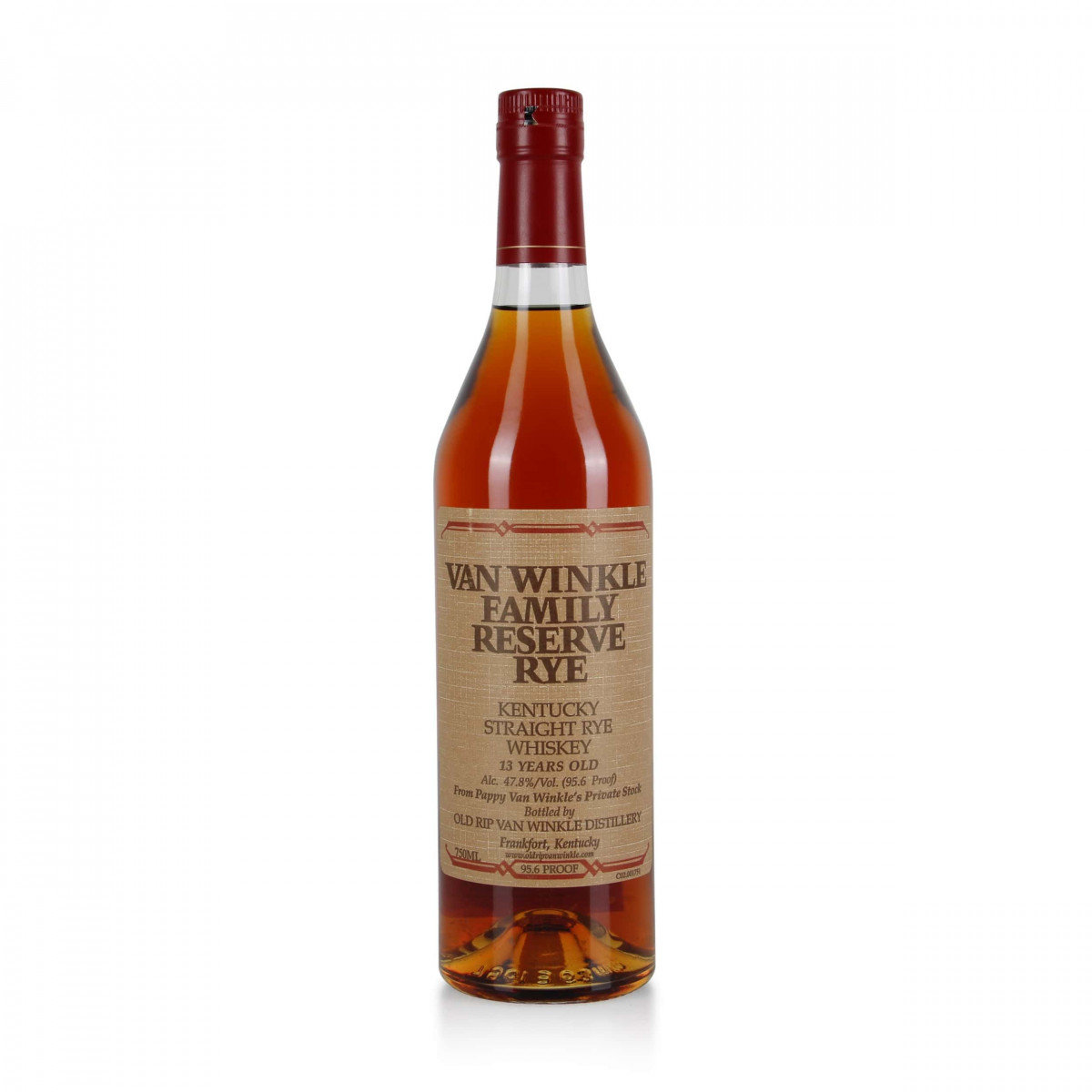
1997 - Squat bottle 12 year old Old Rip Van winkle “Old Time” rye released. 90 proof bottling with “00” reportedly in the base. Auction results list these as 2000 bottling based on the glass code but US based sources suggest this was a one off 1997 release in the squat bottle before becoming the family reserve rye in 1998. Spirit was reported to use Medley distilled rye whiskey pre Cream of Kentucky blending.
1998 - First release of the 13 year old Van Winkle Family Reserve rye. This edition featured no letter code on the bottle number featured on the label. Released exclusively for the Japanese market. Used green tinted glass bottles like other Van Winkles.
1999 - Clear glass bottle used. Bottles released with an A code in front of the bottle number. Despite being a 13 year age statement the whiskey was from a single vintage distillation and so continued to age in cask. This 1999 release is actually 14 years old.
2000 - Bottles released with a B code in front of the bottle number. 15 years old.
2001 - Bottles released with a C code in front of the bottle number. 16 years old.
2002 - Bottles released with a D code in front of the bottle number. 17 years old. Hoffman distillery in Lawrenceburg abandoned for Buffalo Trace in Frankfort. Bottles with Lawrenceburg as the company address are pre-2002.
2003 - Bottles released with an E code in front of the bottle number. 18 years old.
2004 - Bottles released with an F code in front of the bottle number. The rye was tanked at 19 years of age to halt ageing. This is the first year that Cream of Kentucky rye is reported to have been blended in to increase volume available. All the releases from here until 2016 are reportedly 19 years of age despite the 13 year age statement. (Whiskey ID, 2014).
2005 - Bottles released with a G code in front of the bottle number.
2006 - Bottles released with an H code in front of the bottle number.
2007 - Bottles released with an I code in front of the bottle number. Laser codes introduced. See laser code dating guide.
2008 - Bottle numbers restart at A but use dot matrix laser code to date bottles from here onwards.
2012 - Rumours suggest some Buffalo Trace distilled rye was vatted with the remaining stocks of Medley/Cream Of Kentucky blend.
2016 - The final stocks of the vatted rye are released
2017 - No release in 2017
2018 - The first new release of rye, this time containing spirit from Buffalo Trace
Old Rip Van Winkle 15 Year Old / Pappy Van Winkle 15 Year Old
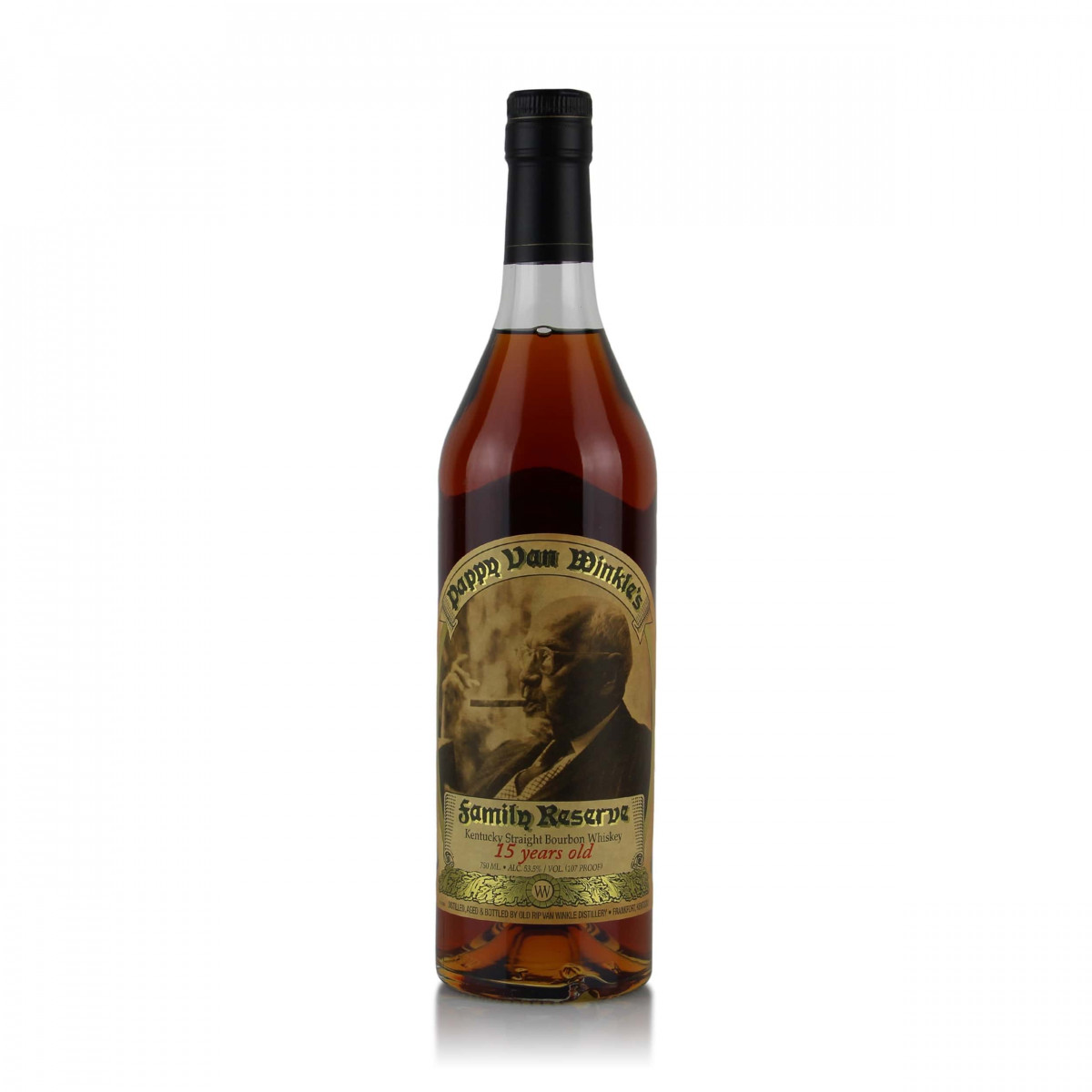
1989 - 1st release likely using Stitzel-Weller stock. Originally called “Old Rip Van Winkle 15 year old”.
1989 - 2003 - Squat bottle used with a year usually embossed in the underside base of the glass. Note that numbers written on the front are not guaranteed to coordinate with the year, check glass code first.
2002 - Hoffman distillery in Lawrenceburg abandoned for Buffalo Trace in Frankfort. Bottles with Lawrenceburg as the company address are pre-2002.
2004 - 2007 - Old Rip Van Winkle discontinued in 2004 in favour of Pappy Van Winkle branding. Transitions from dumpy squat bottle to a tall cognac style in line with other Pappy releases. No laser codes from 2004-2007 bottlings. Contains Stitzel-Weller wheated bourbon.
2007 - Laser codes introduced. See laser code dating guide.
2008 - Expected transition to Buffalo Trace spirit. Note that until 2002 BT did not have the correct Stitzel-Weller wheated recipe, so 15 year old expressions until 2017 are from the original Buffalo Trace wheated recipe.
2010 - No 15 year old release bottled
2014 - Red cap used on this release by mistake. Often called the Christmas/Santa release.
Pappy Van Winkle 20 Year Old
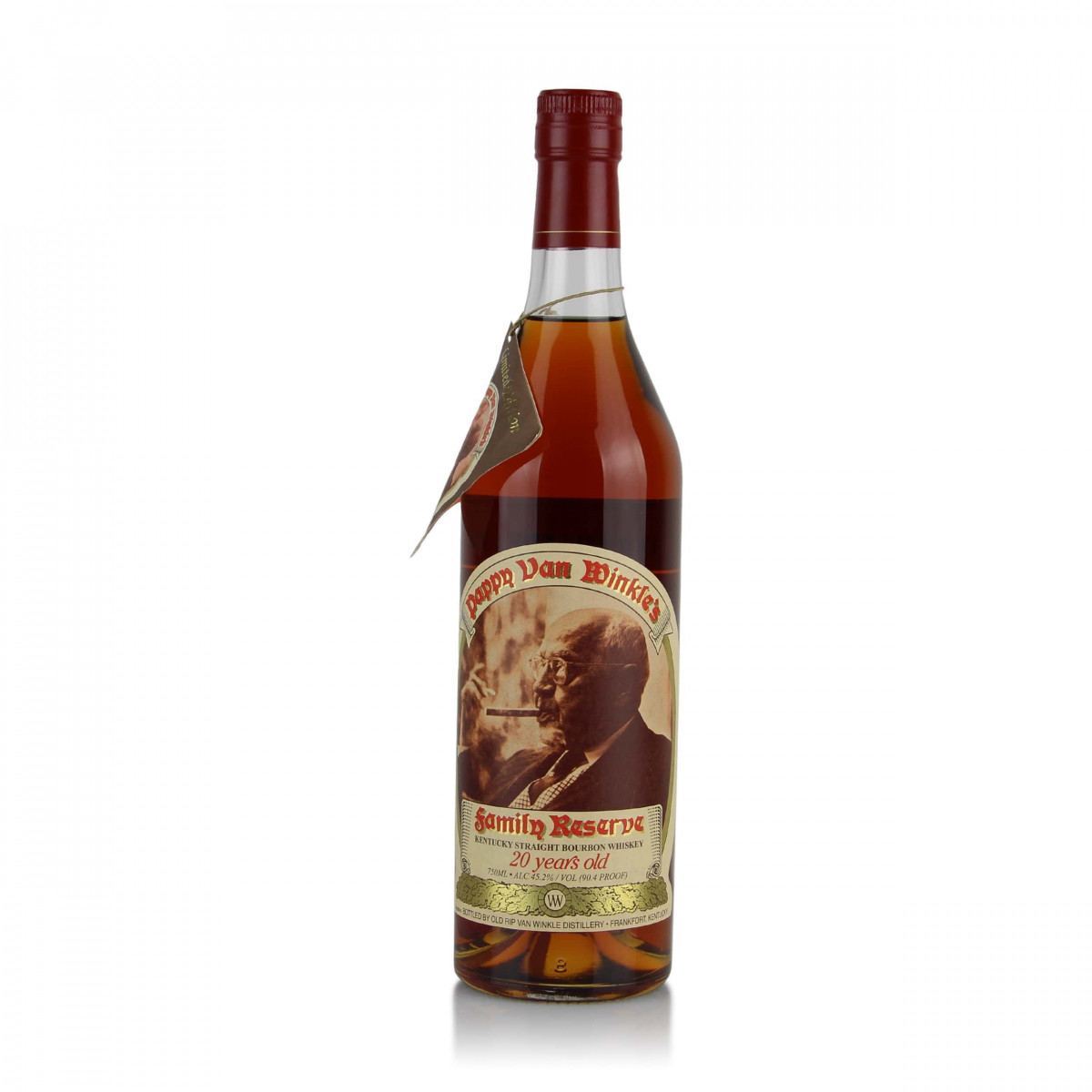
1994 - First release. Spirit inside was likely the rye mash bourbon from Boone County casks.
1994 - 1999 - This period utilised a lightly green tinted bottle type. The colouration can be seen clearer through the neck of the bottle.
1999 - Clear glass bottles introduced and liquid likely switched to Stitzel-Weller product.
2002 - Hoffman distillery in Lawrenceburg abandoned for Buffalo Trace in Frankfort. Bottles with Lawrenceburg as the company address are pre-2002.
2007 - Laser codes introduced. See laser code dating guide.
2012 - Final year of potential Stitzel-Weller stock.
2013 - Move to wheated Buffalo Trace sourced stock. Note that until 2002 BT did not have the correct Stitzel-Weller wheated recipe, so 20 year old expressions until 2022 are from the original Buffalo Trace wheated recipe pre Julian involvement.
2022 - First year that Pappy era wheated bourbon recipe could be bottled.
Pappy Van Winkle 23 Year Old
1998 - First release. Spirit was likely the rye mash bourbon recipe from Boone County. It was gold wax topped. Used the same light green glass bottle the 20 year old was bottled in.
1999 - All glass for Pappy is now clear.
2002 - Hoffman distillery in Lawrenceburg abandoned for Buffalo Trace in Frankfort. Bottles with Lawrenceburg as the company address are pre-2002.
2003 - Second release also gold waxed. Now clearly states Frankfort on the label. From the second gold wax release onwards this reportedly used Stitzel-Weller product.
2005 - Third release also gold waxed.
2007 - Laser codes introduced. See laser code dating guide.
2008 - Our evidence suggests this is the first year the gold foil was used over the wax. Minimal evidence available but we believe no 23 year old was released between 2005 and 2008.
2009 - 2012 - No evidence of 23 year old expressions being bottled in these years
2013 - Next release of the 23 year old. As of 2013 it appears to be a yearly annual release now.
2015 - Move to wheated Buffalo Trace sourced stock. Note that until 2002 BT did not have the correct Stitzel-Weller wheated recipe, so 23 year old expressions until 2025 are from the original Buffalo Trace wheated recipe pre Julian involvement.
2025 - This will be the first year that the Pappy era wheated bourbon recipe could be bottled.
References
Sara Havens, January 6th 2023, ‘Bourbon continues to boom: Looking back on 2022 and looking forward to 2023’, Caskx
Blake Riber, 25th July 2018, ‘Craft Distilling Origins’, Seelbachs
Michael Veach, 19th December 2016, ‘Pappy 101’, Bourbonveach
Rarebird, October 30th 2018, ‘Wild Turkey 101 8-Year (abt 1972) & The Significance of Jimmy Russell’, Rarebreed101,
Whiskey ID, ‘Timelines: Old Rip Van Winkle’
Whiskey ID, ‘van_winkle_family_reserve_rye_chart’,

